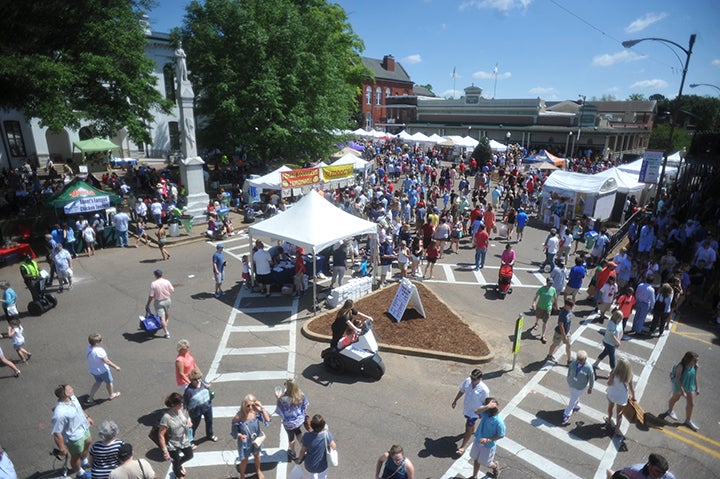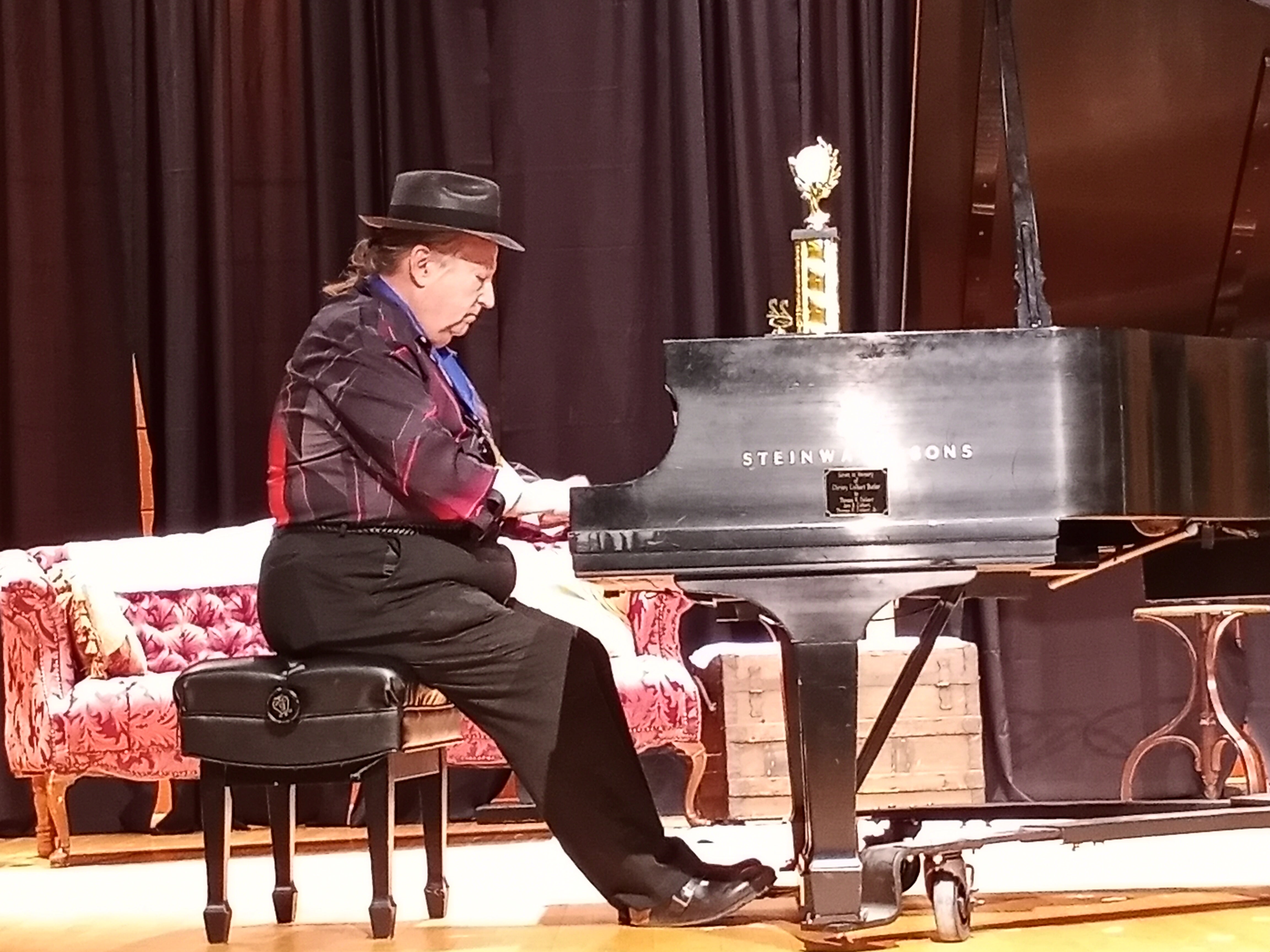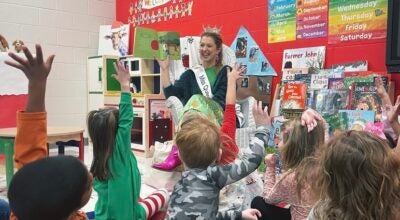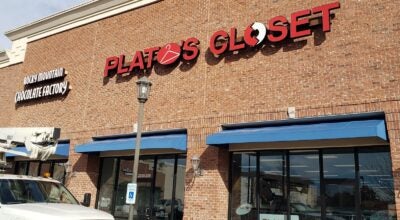YAC round table grows the arts
Published 12:00 pm Wednesday, June 22, 2016

- The annual Double Decker Arts Festival is one place the Yoknapatawpha Arts Council handed out surveys as a part of a community outreach effort. After a round table discussion with community leaders on Monday, YAC is talking more about the 10-question survey that will help evaluate cultural opportunities locally and how they compare with other cities.
By Reid Posey
news@oxfordeagle.com
In the spirit of not only keeping the Oxford community an arts and cultural haven, but continuing to grow these vital aspects of the local identity, the Yoknapatawpha Arts Council hosted its annual Cultural Round Table meeting at the Powerhouse this week, inviting representatives from a wide variety of community organizations to come together for an open discussion of their respective operations.
Although these community-wide meetings are hosted quarterly, YAC Executive Director Wayne Andrews said the Cultural Round Table meeting is typically reserved for brainstorming and an assessment of the status of each organization at the moment.
Short questionnaires were distributed to all present, asking the representatives from the organizations to share with the group their main goal for the year, what they needed to achieve this goal, and any other needs they saw in the arts community.
Andrews said that an event such as this open discussion is designed to foster an atmosphere of synergy and cooperation between different community organizations, as they can mount their efforts together and achieve more through their joint efforts, whether that be in areas such as event coordination, marketing or obtaining resources through things like working together to apply for grants.
Following along the night’s theme of cooperation and collaboration, Andrews also used the meeting as an opportunity to discuss Lafayette County’s role in an upcoming Economic Impact Survey conducted by the Americans for the Arts organization, the only community in the entire state selected for this particular study.
“We’re trying to get all the arts groups to help us with the Americans for the Arts Economic Impact Survey,” he said. “It’s a survey they do every five years. It’s a national study. This year they picked 300 communities around the country. They ask an organization to lead the charge, and in our case, it was the Arts Council.”
Andrews said the Arts Council was tasked with two major responsibilities as the community’s leading organization for the study. First, YAC must gather data at art and cultural events around town throughout the year via a 10-question survey, and second, it must get local organizations to provide information for the study, such as details about their operating budget, the size of their staff, expenses and other pertinent information.
After the Arts Council and the local organizations do their part, Andrews said that Americans for the Arts will step in with the proper resources and experts — statisticians and other professionals — that will work to compile, analyze and compare the data they have been provided as part of the national study, looking at details like how much money community programs generate, how many people attend these programs, how much they pay, and general costs associated with these programs.
“They give that (data) back to us, and we get to see how we stack up against the national average, but they will also do one specifically for the area we define, Lafayette County,” Andrews said. “They will take all of our data that we collect during the year and give us back an Economic Impact Study just for Lafayette County, just for arts and cultural programs.”
The minimum number of surveys that must be completed for Lafayette County to participate in the study is 800 over the course of the year, and there is a limit of 25 responses collected per each individual event. These responses can be collected at any number of community cultural events around Lafayette County, as Andrews noted the impressive variety and volume of programs happening around town constantly.
“This past weekend, we surveyed at Juneteenth, the Sunset Concert Series, the community market, the night market, the film series at the Shelter, the film series at the park,” Andrews said. “We’ve got them out at the historic homes and things like that to try to track that information. We can do it at everything from the biggest thing we do in the community, like Double Decker, to the smallest thing we do.”
Andrews noted what a massive honor it was for Lafayette County to be recognized by a preeminent national organization as a significant arts community, and he also predicted some potential positive outcomes for this study.
“I think it’s going to do two things for us,” he said. “It’s going to bring all the groups together so we can continue to identify group needs and how to coordinate efforts so that instead of an individual organization trying to accomplish something, we might be able to pick off something on a bigger scale because we’re all working together. Second, it’s going to give us hard numbers that actually come from our county, and that’s going to support the tourism efforts to say, ‘That’s why we invest.’”
Andrews said that the Arts Council is always looking for volunteers to help collect surveys around town, and it’s a way for volunteers to help the Arts Council while also becoming involved and knowledgeable about the wealth of cultural events that the community presents.
Andrews also touched on the Arts Council’s reception of a grant from the National Endowment for the Arts, as the Arts Council, on only its second application attempt, became one of only three organizations in the state to receive a grant from the NEA, and represented the only non-governmental group out of the three recipients.
Andrews noted that this grant is a direct, positive example of taxpayer money flowing back into the local economy to support the community.
The grant is allowing the Arts Council to continue its efforts to implement a business incubator for local artists, a project that began with the help of a worker within the program Volunteers in Service to America, or VISTA. With this new funding, the Arts Council is preparing to take this project a step further to help artists deal with the business side of their profession by facilitating their access to resources such as accountants, marketers or attorneys that can help with issues such as copyright and intellectual property law.
“It’s going to help artists in our community go from just being an artist to actually kind of thinking about themselves as a business,” Andrews said.





